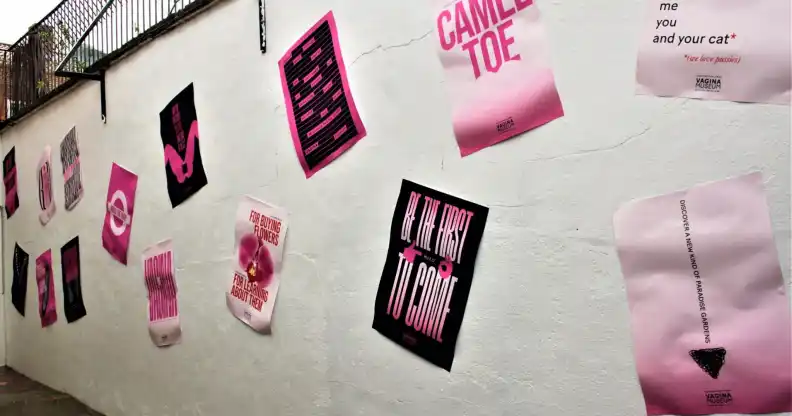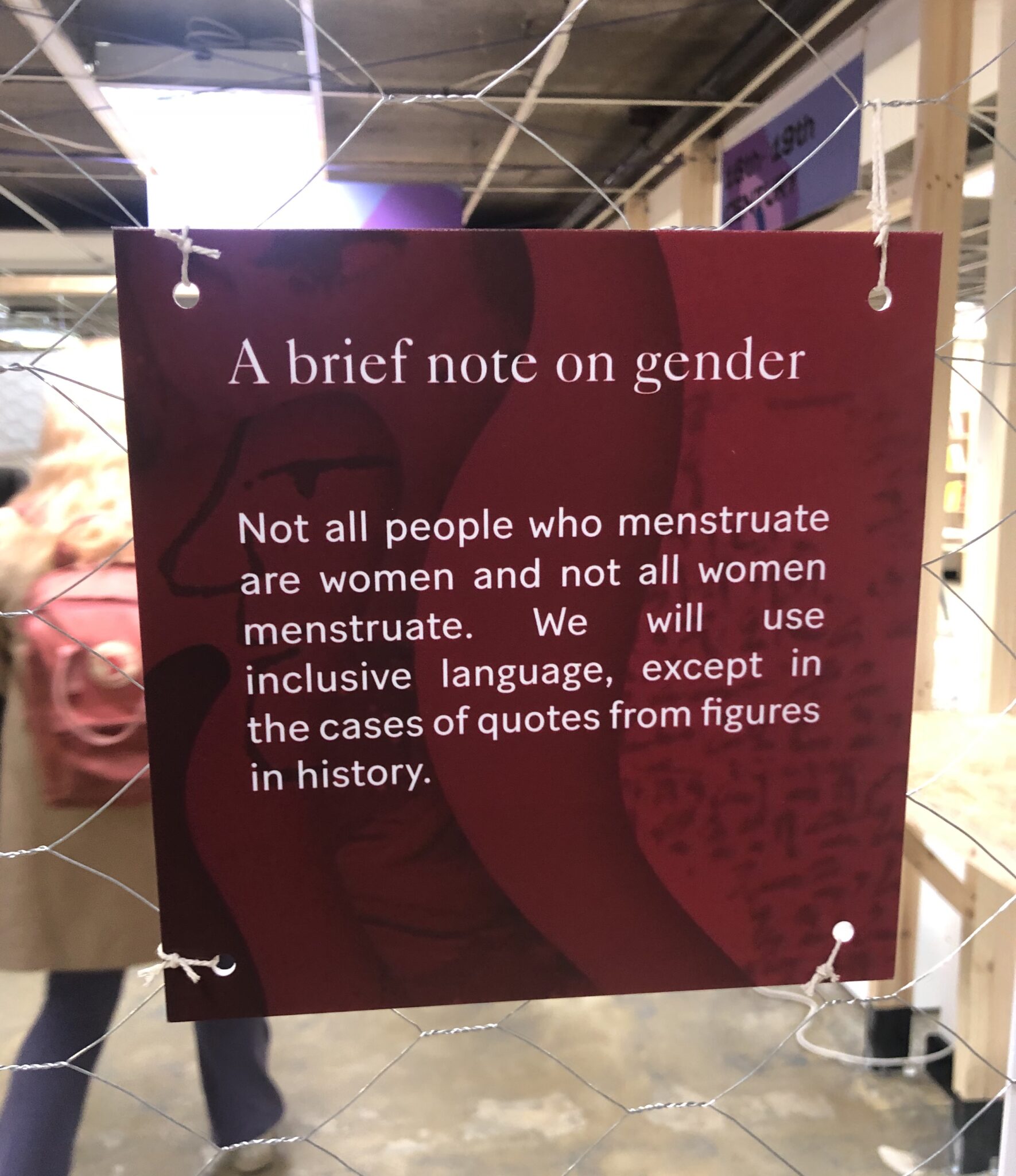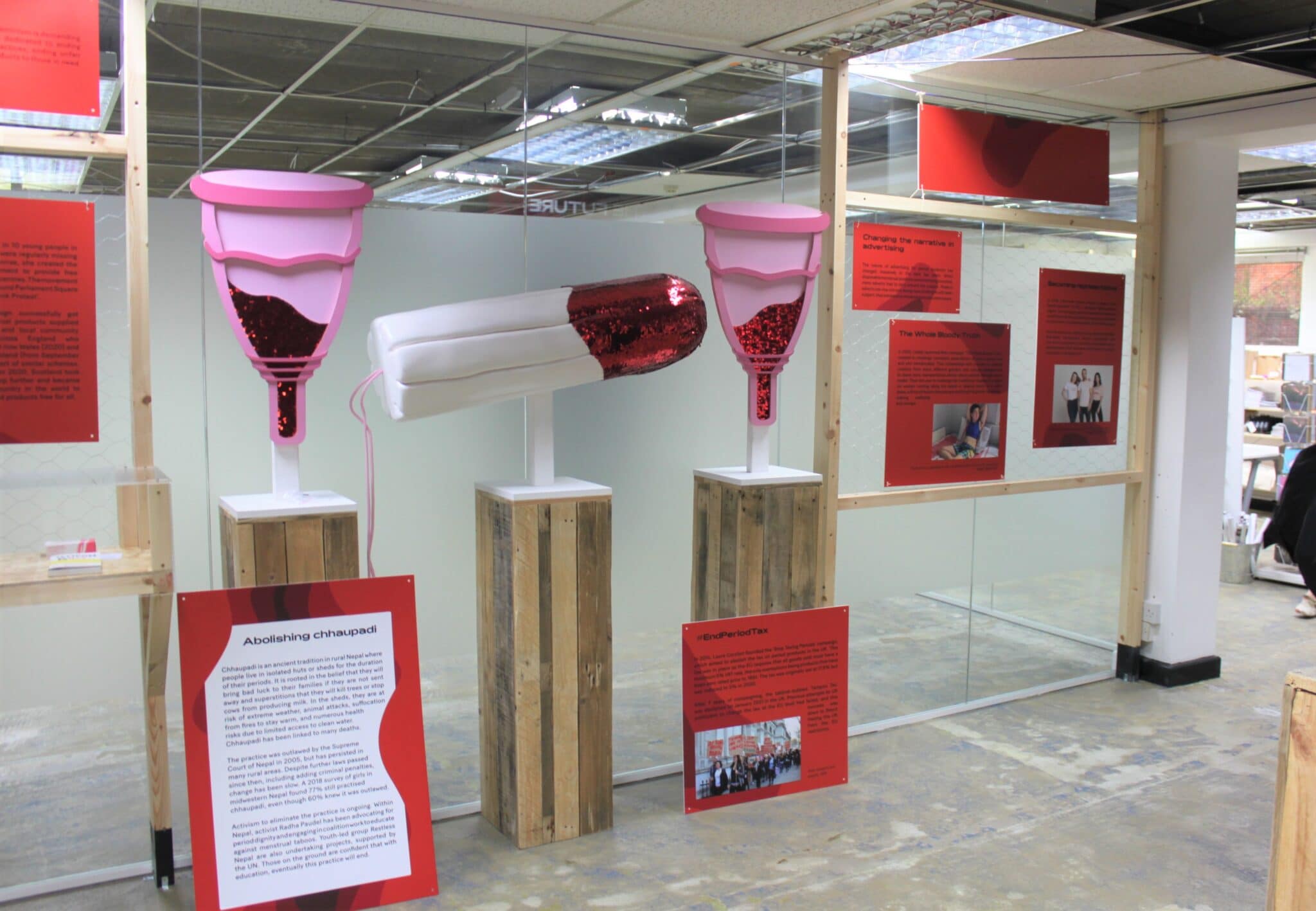Founder of world’s first Vagina Museum explains why it’s for everyone – cis, trans, dads and kids

(The Vagina Museum)
Florence Schechter, founder of the Vagina Museum, wants the world to talk about vulvas.
The Vagina Museum became the world’s first bricks-and-mortar museum dedicated to “vaginas, vulvas and the gynaecological anatomy” when it first opened in London’s Camden Market in 2019.
After surviving the worst of the pandemic, in September 2021 the Vagina Museum was forced to search for a new home when its lease was not renewed. On Saturday (19 March), its new Bethnal Green venue, which is three times bigger, will open to the public.
The new Vagina Museum has space not only for temporary exhibitions, but also a permanent exhibition titled “From A to V”.
It covers the “basics”, or as Schechter describes it, “vaginas 101”, with information on healthcare, anatomy, trans rights, intersex rights, reproductive justice, FGM, sex work and period pride.
Its crowning glory is the “vulva wall” – a wall of photographs showcasing incredible vulva diversity.
“It’s my favourite part of the whole museum,” Schechter told PinkNews.
“Something that people always say to us is ‘I want to see real pictures of vulvas.’ I want to see all the diversity, I want to see what they look like, I want to see if mine is normal.”
There were hundreds to choose from – the museum sourced the photographs from Gynodiversity, which is creating a database to tackle vulva insecurity from ongoing submissions – so Schechter “tried to pick the most interesting ones”.
“We’ve got ones with piercings. We’ve got one with a tampon string, we’ve got different shapes, different colours, different hair.”
one of our favourite bits of our new permanent exhibition 'From A to V' is something you'll have to come and see for yourself because we'll be banned forever from social media if we post it: a vulva diversity wall showing how different we all look downstairs. trust us, it's good.
— Vagina Museum (@vagina_museum) March 16, 2022
The Vagina Museum is queer and trans-inclusive
Since the very beginning, The Vagina Museum has been committed to queer and trans-inclusive education because – unsurprisingly – many queer and trans people have vaginas.
“When we started, we knew we would have to take a stance in some way on this ‘issue’, we couldn’t not,” Schechter said.
“It was obvious. Obviously, we’re going be trans-inclusive. I love many people who are trans. We have trans and non-binary staff and volunteers. They’re just people, and I don’t see why we shouldn’t include them.”
But being a museum dedicated to genitals in the UK has, sadly but unsurprisingly, placed them at the “epicentre of transphobia”.

“It happens in ways which is really interesting,” Schechter said.
“I find it’s not this steady undercurrent, it’s like we’ll do one thing and they’ll all clearly like sharing it around with each other, and there’ll be a huge wave of transphobia.
“And then they’ll forget about us and then they’ll be quiet and we’ll just get on with our lives, it’s wonderful.”
One of these transphobic “waves” crashed on International Women’s Day (8 March), when the museum marked the occasion by putting out a list of incredible trans women from history.
“They obviously hated that,” she said. “Because they were like, ‘But they’re not born with a vagina!’ The thing is, a museum can talk about things that are adjacent to it, you know?
“We will talk about breast cancer, that doesn’t mean we’re not a vagina museum. It means we’re using our very big Twitter platform to do good. So that’s why we talk about trans women, because helping trans women helps all people with vaginas.”
Schechter began personally receiving so much abuse and so many threats that she had to lock down her Twitter account.
The barrage of transphobia takes a “mental toll” on staff, but Schechter and her team have become experts at blocking, reporting and self-care so they can continue to focus on their vital work.
“We know how to look after ourselves now,” she said. “We find it more boring now, because it’s just the same horrible abuse, and it just gets to a point where it’s just noise.”
Of course trans and non-binary team members are hit hardest, and Schechter makes sure that “they know that we will always support them”.
“They also know that if we do anything wrong, they can tell us,” she added.
“I’ve received feedback, like we had a board and one of our members of staff was like, ‘The way you’ve phrased that, I know you’re not transphobic, but it comes across as transphobic.’ And I was like, ‘Oh my god. Thank you.’ So I reprinted the board with better words.”
View this post on Instagram
One of the tenets of The Vagina Museum is that gynaecological should be available to everyone, and so accessibility is paramount.
The museum relies on memberships and donations, and so every exhibition is free. Every music video, film and TikTok displayed is subtitled, the venue has no steps, and there are no age restrictions on any part of the museum.
“It’s really important for us to have absolutely no minimum age limit,” said Schechter.
“The main reason for that is that children have vulvas, and they need to learn about them too. Adults can get really weird about talking to children about genitals, and I get it, it is weird.
“But you have to because as a parent or guardian, it’s your responsibility to teach them about the world, about their body, teach them how to look after themselves. And so that’s why we let anyone of any age in because they need access to this knowledge as well.”
Schechter said that the museum has welcomed many children, from babies to curious teenage boys, and the reaction has always been “overwhelmingly positive”.
There’s also a “phenomenon” of single cis dads bringing their children in, she said, because “when a single dad has a daughter or a child with a vulva, they have to have a puberty talk with them, but they don’t know how to do that because no one did it with them”.

(The Vagina Museum)
Of course some parents don’t see the museum as “appropriate” for their children, which Schechter says is “absolutely their prerogative”. All she can hope for is that the museums very existence sparks a conversation.
“Just last night, a mum and a daughter walked past, she was maybe nine,”she said.
“She pointed at the sign and said, ‘Oh, it’s a vagina museum!’ And the mum was like, ‘Maybe that’s for me, maybe not for you,’ and then they just walked right past.
“Hopefully, though, it will have prompted a conversation. At least maybe they’ll get home and she’ll be like, ‘Mummy, why is The Vagina Museum for you and not for me?’ And they’ll have a nice chat about it.”
View this post on Instagram
The Bethnal Green site encompasses everything The Vagina Museum was doing before, but on a grander scale.
While the museum has always run events, it now has a dedicated event and learning space, as well as a community gallery in which exhibitions will be co-designed with various community groups and activists.
Schechter is planning outreach events, school trips and pop-ups, as well as planning further exhibitions.
The Vagina Museum is currently showing the exhibition “Periods: A Brief History”, a fascinating look at social attitudes, myths, and menstrual products – from cave paintings to moon cups.

